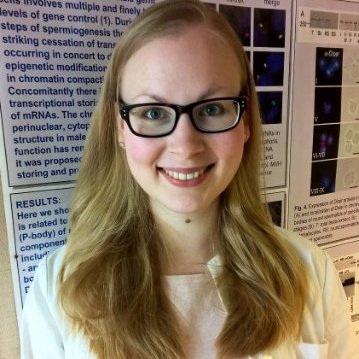
By Tiina Lehtiniemi
The man in the editor’s chair
The Dutch gynaecologist Nils Lambalk took over as editor-in-chief of Human Reproduction early this year. He is a gynaecologist and fertility specialist with focus on reproductive endocrinology. He has published over 100 papers and book chapters on subjects related to his research interests. We asked him to tell us a little bit about himself, his career and to share advice to young researchers. Here’s how he replied:
1- When and why did you decide to work in the field of reproductive biology?
I am a farmer’s son. I did a lot of cattle obstetrics and already at the age of around 12 I decided that I wanted to become a medical doctor and more specifically to become a gynecologist but primarily because I was so interested in obstetrics. As a medical student I already started to do scientific work by helping a PhD student who investigated placental physiology. It contributed to my first publication as coauthor*. Pragmatically, however, by the end of my medical study I applied for a reproductive neuroendocrinology PhD project focusing on the physiology of pulsatile GnRH. And this world caught me even more then my original favorite, the obstetrics. On the other hand, I have never regretted to continue to be involved in complex obstetrics over the past 30 years as gynecologist while being the on call consultant.
*Vermeulen RC, Lambalk NB, Exalto N, Arts NF. An anatomic basis for ultrasound images of the human placenta. Am J Obstet Gynecol. 1985 Dec 1;153(7):806-10. 2.
2 – In your own words, could you describe your journey to the Editor in Chief of Human Reproduction?
As an active European member of the reproductive scientific community I publish from the beginning of its existence in the journal. A was associate editor for 4 years and also involved in editorial activities for a number of other journals such as being editorial consultant for the Lancet, Academic Editor for PlosOne and Section Editor for RBMOnline. While member of the Executive Board of the European Society for Human Reproduction and Embryology I was closely involved in the publication outline strategies. With all this experience I felt some confidence with applying for the coming vacancy of EIC of the journal which was happily successful.
3 – What are the key scientific questions you look forward to being solved in the field of female and male reproduction in the next 10 years?
This difficult to answer. If we look at important gaps of knowledge and problems that cannot be solved with knowledge of today I would say:
- Helping patients to procreate that do not have gametes (anymore) by generating new gametes from their own somatic cells.
- Solve what contributes to unexplained infertility and based on such new knowledge develop treatment strategies. In this context I believe that we as reproductive scientists have neglected the role of sexual behavior. This topic deserves in-depth high quality research.
- I certainly hope we make real progress with the understanding for many women devastating “benign” neoplasm endometriosis in terms of etiology, accurate non-invasive diagnosis and furthermore its treatment and let’s not forget prevention of it.
4 – Could you describe a moment of eureka in your career as a scientist or as an editor?
I really had one! I had just completed my residency as gynecologist and was deep at night as consultant on my way to the hospital for a delivery when I realized that I had to find out if mothers of natural dizygotic twins endogenously hyper-stimulated by having high FSH levels. I designed a study in which we looked at the pulsatile secretion of LH and FSH in the early follicular phase of those mothers and indeed almost half had extraordinary high (> 10 U/L) levels of FSH. And to my great satisfaction very recently we identified polymorphisms in the gene coding for the FSHB as responsible for the treat.
5 – Which advice would you give to young researchers?
Think laterally. Try 180 degrees different angles in looking at matters. The former president of Royal Dutch Academy of Science Robbert Dijkgraaf once proposed: when you look for a book in the library and found it, grab to book next to it, to become acquainted with unexpected novel insight. Furthermore trust your own observations. See what you see and not what others or convention tells you to see. This might be your eureka discovery.
